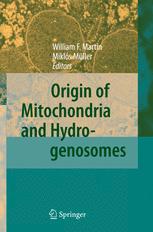

Most ebook files are in PDF format, so you can easily read them using various software such as Foxit Reader or directly on the Google Chrome browser.
Some ebook files are released by publishers in other formats such as .awz, .mobi, .epub, .fb2, etc. You may need to install specific software to read these formats on mobile/PC, such as Calibre.
Please read the tutorial at this link: https://ebookbell.com/faq
We offer FREE conversion to the popular formats you request; however, this may take some time. Therefore, right after payment, please email us, and we will try to provide the service as quickly as possible.
For some exceptional file formats or broken links (if any), please refrain from opening any disputes. Instead, email us first, and we will try to assist within a maximum of 6 hours.
EbookBell Team

5.0
78 reviewsThe evolutionary origins of hydrogenosomes have been the subject of considerable debate. From early days it was apparent that hydrogenosomes had evolved on multiple occasions in different eukaryotes, but from which progenitor organelle or endosymbiont was unresolved. Work from many different laboratories has contributed towards formulating the current hypothesis that hydrogenosomes and mitosomes, their even more reduced cousins, share common ancestry with mitochondria. Their shared similarities, for example their common mechanisms of protein import and their double membrane, can be explained by common ancestry, and their differences by descent with modification under contrasting lifestyles. The hypothesis that mitochondria, mitosomes and hydrogenosomes are homologues, predicts that, as the organelles are studied more deeply, additional shared features will be revealed.
However, it is already apparent from the contributions to this volume, that identifying the genetic contribution to eukaryotes of the mitochondrial endosymbiosis, and revealing the functions of its descendent organelles, are key to understanding eukaryotic biology and evolution.